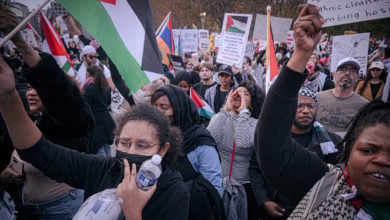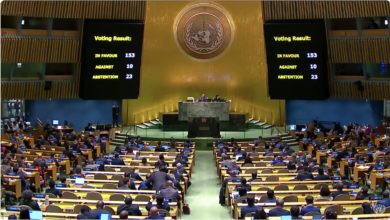One of the most significant fallacies in U.S. foreign policy circles is the idea that there are “no boots on the ground” in the Middle East, a philosophy that politicians trumpet over and over again. Well, there are boots on the ground in Iraq and Syria. In Iraq there are roughly 5,000 troops on the ground and in Syria there are 500, mostly special operations soldiers.
This is consistently portrayed incorrectly in the U.S. media. All U.S. forces are portrayed as “trainers” or support personal, with the implication being that they are more or less out of harm’s way. This is part of a broader attempt by the Pentagon and the Obama administration to try to have their interventions not classified as “wars.” This is a propaganda effect designed to lessen oversight and controls from Congress, and also to keep the people from erupting in anger. Fewer than 50 percent of people in the U.S. support sending troops to Syria; fewer than 30 percent support sending arms to Syrian “rebels.”
Slim majorities of support, or at the very least complacence, can be maintained as long as it appears the U.S. isn’t rushing headlong into new Middle East wars, but anything beyond that risks the eruption of a new anti-war movement that could be political disorienting (and perhaps even destabilizing) for the political elite.
The reality, however, is that the U.S. intervention in both Syria and Iraq is really quite significant if we look beyond pure numbers.
For instance in Iraq, U.S. troops are playing a major role operating artillery to support Iraqi forces advances on the Islamic State. The Kurdish news outlet Rudaw described the U.S. artillery as “pounding” ISIS positions in support of the Iraqi army offensive in Mosul in late December. U.S. forces are also providing spotters for air strikes. In any modern large-scale offensive these are not side pieces, but the necessary ingredients to give the Iraqi military the edge they need to defeat the Islamic State which on their own they were failing to do.
On top of that the U.S. military has now admitted that there are 450 U.S. troops embedded with Iraqi combat units inside of Mosul itself. If that isn’t enough. on January 10 Secretary of Defense Ashton Carter stated that even if the Islamic State is defeated in Iraq, the U.S. will not leave, in fact, he stated that the United States will most likely leave a residual force in the country.
It has also been clear for some time now that in both Iraq and Syria, U.S. special forces are directly involved in the fighting; the scope and extent is not known but it’s clear that Special Operations Command is involved in much more than simply teaching people how to shoot and rappel from windows.
Recently U,S. Special forces made news when they launched a large scale raid to kill Islamic State leaders.
Ultimately what is happening is pretty clear: classic mission creep. There was never any real unanimity in the U.S. establishment about how to manage the interventions. Barack Obama was elected on a platform that clearly aimed at curbing anger at the open-ended commitments in Iraq and Afghanistan. Ultimately, though, no full-scale withdrawal ever took place.
The feebleness of the Iraqi military in the face of the emergence of the Islamic State has provided the excuse for a more comprehensive re-engagement in the region. We are seeing a modification of the original Bush-era regime change agenda, that now aims at using federalism or perhaps outright dismemberment to achieve the ultimate goal of eliminating strong states in the region and maintaining U.S. hegemony over the region.
Either way the reality is there are boots on the ground. U.S. forces are fighting and dying in Iraq and Syria, and the strategy of deepening the conflicts in those two nations still is not working for the millions forced out of their homes into refugee camps and graves.





